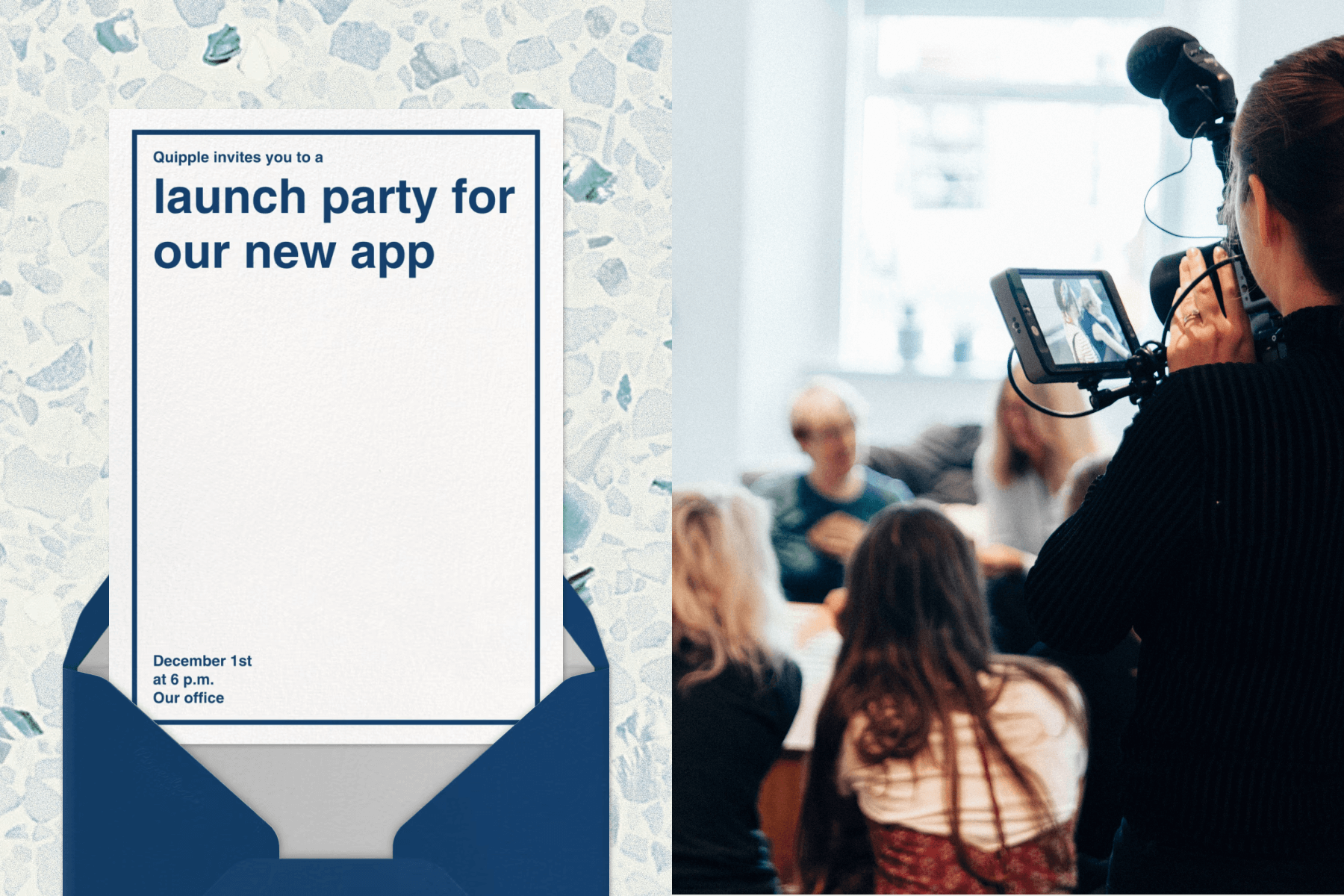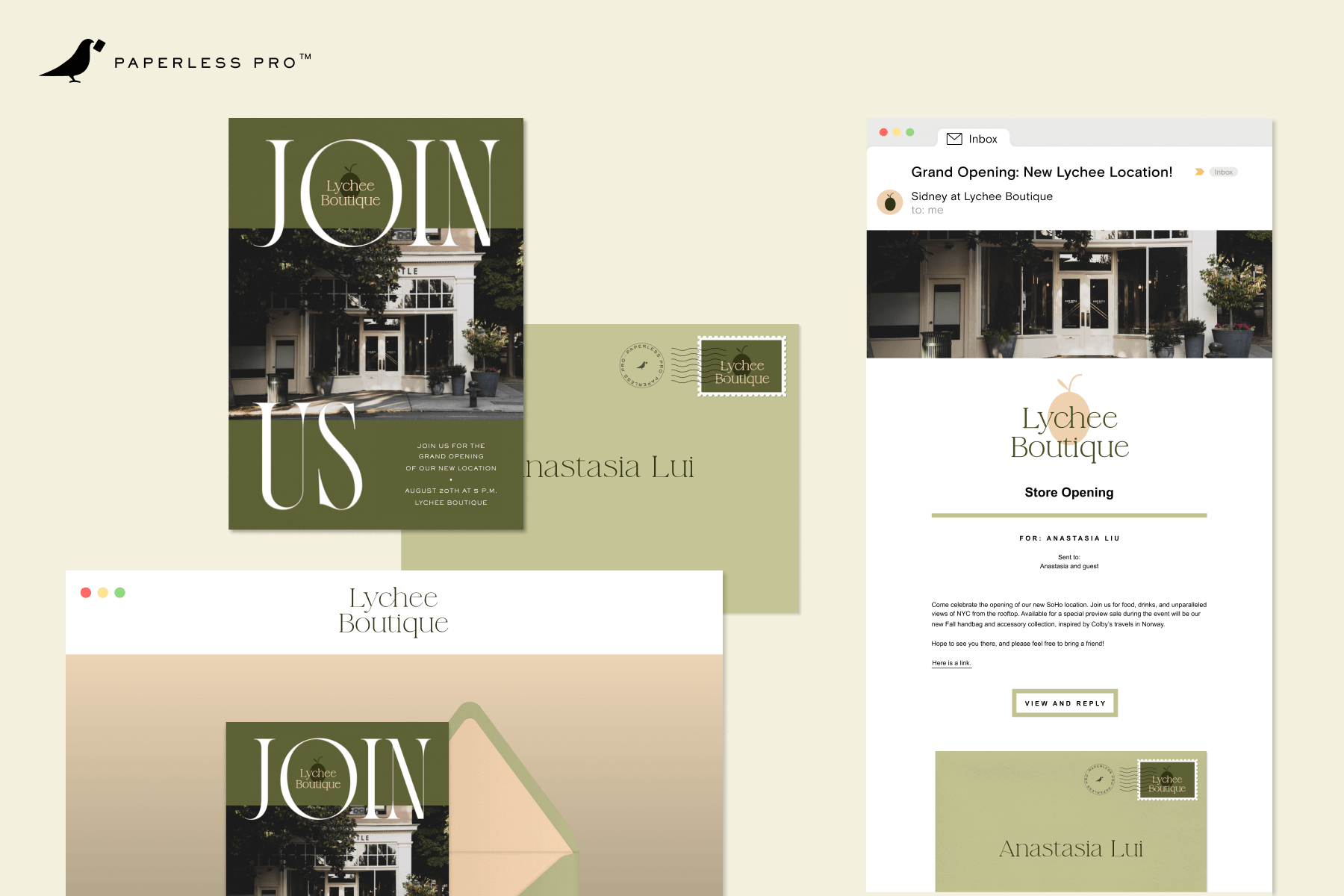How to successfully launch a new product in 8 steps

You’ve put in the work, ironed out the kinks, and now it’s time to launch. Successfully launching a new product is an exciting endeavor that introduces your innovation to the world and requires as much attention to detail as it took to create the product in the first place. With just a few steps of deliberate planning, strategic marketing, and effective communication, your product can achieve the impact you’ve been dreaming of.
In this guide, we’ll walk you through eight steps that’ll help you successfully launch a product, including communication strategies and marketing tactics. Whether this is your first product launch or you have years of experience, we’ll help you navigate the process with confidence.
Table of Contents
What is a product launch?

A product launch introduces a new product or service to the market. It’s an opportunity for a company or individual to create awareness, educate current and potential customers, and establish a presence—in other words, it’s your chance to create buzz around the idea, tool, or service you’ve worked hard to develop.
There are two types of product launches: a soft launch and a hard launch. Understanding the difference between the two will help you determine the right course of action to take for your product and your company.
A soft product launch is often:
- A limited release targeted toward a smaller audience or specific market segment
- Designed to test the waters and gather information before executing a full-scale launch
- A valuable, inexpensive, low-risk way to assess preparedness, gather feedback, and inform decisions for the next steps
Take a restaurant opening, for example. Restaurants sometimes take advantage of soft openings to invite staff, family, friends, and select patrons to test menu items and give operations a few run-throughs so they can work out any kinks before an official grand opening. There is little marketing and, therefore, little expense involved—word of mouth or a personal invitation may be the extent of it.
A hard product launch is:
- A wide-reaching, full-scale release into the market
- Intended to establish the product or business in the market and make an impact in the process
- Supported by a bigger budget and a fully developed, multi-faceted marketing strategy
- More common in industries like technology, entertainment, or automobile, due to the costs
Let’s apply this to the release of a new car, which often includes a special event with a grand unveiling, mass marketing across multiple platforms, and immediate product availability. In a hard launch, every single detail has been tested hundreds of times so that every aspect is ready for the consumer. The risks associated with a hard launch are much higher—and so is the investment.
Both hard and soft product launches are a chance to make your presence known. Before you put your product out there, it’s critical to have a plan that not only showcases its unique components, but also establishes brand awareness, creates customer loyalty, and paves the way for long-term success.
When should you consider having a product launch?

Determining when to launch a product depends on a variety of factors, all of which are unique to:
- Your business
- Your product or service
- Market conditions
- Audience
- Competitors
So, when do you launch a new product? Think less about timing and more about strategy. Internal readiness, product distribution, communication, and support will have more of an impact on the success of your product launch than selecting a date on the calendar.
Your goal should be to optimize impact, which can only be achieved when you thoroughly understand the season, market conditions, and consumer trends before you act.
- Season: Depending on what your product or service is, launching during peak buying seasons, like the holidays or back-to-school shopping, can be a favorable setup for increased visibility and sales. For instance, industries like fashion and technology have defined cycles that impact consumer interest.
- Market conditions: Determine where your product could fit in the current market. Is there a need for it? Does the price point fit the need? Is the economy in a position where consumers can afford to purchase your product?
- Consumer trends: This is where research comes in. Conduct surveys and consider the general consumer landscape. What trends are consumers jumping on and which are sustainable? Understanding what consumers want will help you fine-tune your product capabilities and price point.
The market can be fickle, and the fast pace of social media heavily influences consumer trends. Conducting research, reviewing case studies, and surveying your potential audience are critical components of product development and also influence the timing of your launch.
Once you’ve identified and assessed these key factors, you can start developing your product launch approach and position it—and your business—for success.
How to launch a new product

Armed with research and informed strategies, you should feel confident about your product’s place in the market and prepared to launch. Here are eight steps to successfully launching a new product.
1. Know your audience
In order for your product launch to be successful, you’ll need to gain knowledge and insight into who’s buying it. Based on your initial research, you should already know your intended audience—now, find out what makes them tick.
- Conduct focus groups: Survey your current or potential customers to determine how your product could improve their lives and what the limitations may be.
- Lean on your internal experts: Your sales, client relations, and customer service teams can analyze the feedback and adjust the product and marketing as needed.
- Use the feedback: Consumer feedback informs your decisions and next steps, and builds rapport with current customers. If they sense that their thoughts and ideas are valued, they’ll be excited to support and promote your new project.
2. Establish what makes your product unique
To shine up your brand positioning statement, start by clearly answering these questions:
- What is it that makes your product remarkable?
- Where will it exist in the marketplace?
- What problems will it solve? For whom?
These answers will also drive your marketing plan and rollout.
The clarity gained allows you to craft compelling content that resonates with your audience and influences how to engage with potential customers every step of the way—ensuring that your strategy and campaigns are cohesive, impactful, and aligned with your brand’s mission.
3. Finalize your brand identity

You’ve likely been tweaking and tinkering with design elements throughout your product’s development, but as you prepare it for the market, it’s time to put a bow on your branding and make the product uniquely yours.
Determine the following branding elements:
- Product name
- Logo
- Colors, fonts, and images
- Packaging
- Voice and tone guide for messaging
- Style guide for product copy
- Email and social media marketing templates
4. Create a comprehensive marketing strategy
To flex those marketing muscles:
- Identify your marketing goals, strategy, and budget
- Determine the marketing channels that will reach your audience
- Map out email campaigns, content marketing, and paid advertising opportunities
- Get creative with social media marketing by using product placement and partnering with experts or influencers who align with your product and company values
5. Build excitement

You’re ecstatic about the prospect of your product, and now it’s time to show everyone else why they should be too. Give customers sneak peeks through email and social media channels—you’ll benefit from the increased engagement. Leverage any relationships you have with influencers and experts so they can give sneak peeks on their accounts, too.
Build on the momentum by planning a product launch event. A launch party isn’t just for your customers—you and your team should celebrate all of your efforts as well. As you weigh different launch party ideas like a cocktail hour, expert speaker panel, or private viewing party, start planning the basics in a few easy steps:
- Determine a date, time, and venue
- Outline an event budget
- Incorporate your branding in the decorations
- Plan to have product information available and on display
- Design, send, and track launch party invitations that you can fully customize to match your company’s branding with Paperless Pro
- Add a Schedule Block to your invitation with the order of events or agenda for guests
- Highlight guest speakers in a Speakers Block and provide a photo, biography, and links to their website or social media pages
- Highlight and thank company partners with a Sponsors Block that displays their logos and company website links
6. Prepare your internal systems

Now that your audience has a taste of what’s to come, it’s imperative that everything is primed and in position to launch.
- Make any adjustments to distribution channels, product supply lines, and logistics
- Have a plan to scale your resources and output if your launch proves to be more successful than anticipated
- Ensure that your sales and customer support teams are equipped with updated information and tools to address customer questions about the new product
- Communicate with vendors, partners, and e-commerce platform providers so that you’re in lockstep when it’s time for lift-off
7. Launch your product
The moment you’ve worked so hard for is finally here! When it’s time for the launch:
- Keep an eye on your website and e-commerce platform to ensure everything is running smoothly
- Monitor social media channels
- Have fun with the debut of your product and engage with your customers—after all, they’re as excited as you are!
- Respond to customer questions in a timely manner and record any feedback
After launch day, celebrate how far you, the team, and your product have come, and thank the crew with a well-deserved appreciation event. It can be anything from a team lunch to a cocktail after work—or at the very least, take time out for a collective deep breath.

8. Assess your launch
Now that your product has been released into the wild, observe how it performs.
- Begin tracking key performance indicators: engagement, website traffic, conversion rates, and sales
- Review the results of marketing campaigns
- Refine systems as needed
- Compile your research, reviews, and notes in order to prepare for the next phases of your business plan—or develop a blueprint for future product launches
Feedback is everything at this stage of a product, so continue to collect customer feedback and stay in tune with their patterns. You may decide to offer incentives for reviews or ask for testimonials to further establish your reputation and brand loyalty.
Product launch FAQs

With so many factors to consider in a product launch plan, questions will inevitably arise throughout the process. Check out our frequently asked questions so you can plan for as many variables of your product launch strategy as possible.
When should I start planning a product launch?
It’s a good idea to start planning a product launch between one year to six months before your planned release. This will allow for preparation time for the main aspects that will lead to product success:
- Market research
- Product development
- Marketing and communications strategy
- Promotion
- Supply chain
What are common mistakes made during a product launch?
Product launch mistakes are typically made early in the product launch plan, which is what makes the research and development phase so crucial. Insufficient or inadequate market research can lead to a host of problems:
- A misunderstanding of the customer and their needs
- Too many competing products in the market
Missteps can also occur in the marketing process, which is why it’s important to develop messaging and identify the right channels to effectively disseminate information about your product.
As you review your product launch checklist, ensure that your supply chain and logistics are as buttoned up as possible. Delays in these areas can result in product launch setbacks and may push your timeline by months.
What if my product launch doesn’t meet expectations?
If your product launch doesn’t meet your expectations, take it as an opportunity to assess what didn’t work and make adjustments for a future project. There are so many variables to consider during a product launch, especially if this is your first crack at it.
Analyze the information you do have to pinpoint the ways in which your launch fell short of expectations. Then, identify any marketplace variations or changes in consumer behavior that may have contributed to the results.
It’s all part of the learning process. Learn from the information you’ve gleaned, adjust your tactics, obtain more customer feedback, and realign your partnerships or vendors so your next launch can account for any mistakes that were previously made.
How do I follow up with attendees and leads after a product launch?

The period of time after a product launch is an opportunity to address feedback professionally and promptly. Use this time to your advantage and have healthy conversations with customers and clients. Send customized thank you cards or recap emails and use your CRM tools to track interactions from the event. If you listen and make adjustments based on customers’ experiences
with your product, it will lead to success. Developing a relationship with your customers will also strengthen brand loyalty and encourage engagement.
Plan for successful product launch events with Paperless Pro

Paperless Pro has the event management features and tools to help turn your efforts into a successful product launch. From customizable launch party invitations to launch party ideas that’ll excite your customers and your team, we’ve got everything you need for your next product launch event.
Incorporate your company colors and upload your own logo to brand your invitation and the customized invitation email your guests receive. For enhanced security measures and event exclusivity, create a Custom URL for your event with password protection. When you’re ready, send your invitations out via email, text, or as a shareable link embedded in your own email platform. Once your invitations are sent, our Advanced Analytics view features easy-to-read graphics to help you stay on top of delivery status, RSVPs, and event page views.
With Paperless Pro, unlock unlimited access to our advanced suite of design features and tools to generate even more buzz for your upcoming product launch and other business events.
Find sophisticated, business-minded designs that streamline planning and impress guests.
